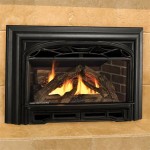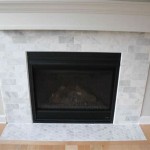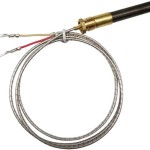Shelf Above Fireplace: A Comprehensive Guide
The installation of a shelf above a fireplace is a common design choice, offering both aesthetic appeal and practical utility. This placement provides opportunities for displaying decorative items, storing media components discreetly, or even integrating technological elements seamlessly into the living space. However, the decision to install a shelf above a fireplace requires careful consideration of several factors, including the fireplace type, material selection, safety standards, and design aesthetics. Understanding these elements is crucial to ensuring a successful and safe installation that complements the overall character of the room.
Fireplace Type and Heat Considerations
The type of fireplace plays a significant role in determining the feasibility and design of a shelf placed above it. Fireplaces can be broadly categorized into wood-burning, gas, and electric models, each producing different levels of heat and possessing unique venting requirements. Wood-burning fireplaces, for example, generate substantial heat and may release soot and embers, necessitating a greater distance between the fireplace opening and the shelf. Gas fireplaces also produce heat, although generally less than wood-burning units, and require proper venting to ensure the safe removal of combustion byproducts. Electric fireplaces, on the other hand, generate primarily radiant heat and often offer adjustable temperature settings, making them a potentially more flexible option for incorporating a shelf above.
The heat output of the fireplace directly impacts the choice of materials used for the shelf. Materials susceptible to heat damage, such as certain plastics or low-quality wood composites, should be avoided. Instead, heat-resistant materials like solid wood, stone, or metal are preferred. The distance between the fireplace opening and the shelf is equally critical. Building codes and manufacturer recommendations typically specify minimum clearances to prevent fire hazards and ensure the safe operation of the fireplace. Exceeding these minimum clearances is often advisable, especially with wood-burning fireplaces, to mitigate the risk of overheating and potential damage to the shelf and its contents.
Furthermore, consider the direction of heat flow from the fireplace. Convection heat rises, while radiant heat travels in straight lines. The shelf design should account for both types of heat transfer. For instance, a shelf that protrudes excessively may trap heat, potentially creating a fire hazard. Similarly, a shelf positioned directly above the fireplace opening may be subjected to intense radiant heat, necessitating the use of a heat shield or a material with exceptional heat resistance.
Material Selection and Construction Techniques
The selection of appropriate materials is paramount for the safety and longevity of the shelf above the fireplace. As previously noted, heat resistance is a primary consideration. Solid wood, particularly hardwoods like oak, maple, or walnut, offers a combination of durability, aesthetic appeal, and reasonable heat resistance. However, even solid wood can be susceptible to drying and cracking if exposed to prolonged and intense heat. Therefore, applying a heat-resistant finish or sealant is highly recommended.
Stone, such as granite, marble, or slate, is another excellent choice for a shelf above a fireplace. Stone is naturally heat resistant and offers a sophisticated and timeless aesthetic. However, stone can be heavy, requiring a robust support structure to ensure it is securely mounted. Metal, such as steel or cast iron, is also highly heat resistant and can be fabricated into various shelf designs. However, metal can conduct heat, potentially creating a burn hazard if touched while the fireplace is in operation. Therefore, careful consideration should be given to the placement and accessibility of the metal shelf.
Construction techniques also play a critical role in the stability and safety of the shelf. The shelf should be securely anchored to the wall using appropriate fasteners, such as screws and wall anchors. The type of wall (e.g., drywall, plaster, brick) will determine the most suitable fasteners. For heavier shelves, such as those made of stone, it is advisable to consult with a structural engineer to ensure that the wall can adequately support the weight. The use of brackets or corbels can provide additional support and enhance the aesthetic appeal of the shelf. The spacing and size of the brackets should be determined based on the shelf's weight and dimensions.
The depth of the shelf also merits careful consideration. A shelf that is too deep may obstruct the flow of heat from the fireplace, while a shelf that is too shallow may not provide sufficient space for displaying decorative items. A depth of 8 to 12 inches is often a good compromise, providing ample display space without significantly impeding heat flow. The surface of the shelf should be smooth and level to prevent items from sliding off. Applying a non-slip finish or using decorative mats can further enhance the stability of displayed items.
Aesthetic Considerations and Functional Design
Beyond safety and structural integrity, the aesthetic integration of the shelf with the fireplace and the surrounding room is crucial. The style of the shelf should complement the overall design aesthetic of the space. For example, a rustic fireplace may be paired with a reclaimed wood shelf, while a modern fireplace may be complemented by a sleek metal or glass shelf. The color and finish of the shelf should also harmonize with the fireplace surround and the room's existing color palette.
The functional design of the shelf should take into account the intended use. If the shelf is primarily intended for displaying decorative items, ample space should be provided. If the shelf is intended for storing media components, considerations should be given to cable management and ventilation. Integrating concealed wiring and ventilation grilles can help maintain a clean and uncluttered appearance. Consider the items that will be placed on the shelf. Heavy items require a stronger shelf structure, while delicate items may benefit from a non-slip surface. Think about incorporating lighting, either above or below the shelf, to highlight displayed items or provide ambient illumination.
The height of the shelf above the fireplace is also a crucial design element. A shelf that is too high may appear disconnected from the fireplace, while a shelf that is too low may feel cramped. A good rule of thumb is to position the shelf so that it is visually balanced with the fireplace and the surrounding wall space. Consider the visual weight of the fireplace and the shelf. A large, imposing fireplace may require a larger shelf to balance its appearance. Conversely, a smaller fireplace may be overwhelmed by an excessively large shelf. The scale and proportion of the shelf should be carefully considered to create a harmonious and aesthetically pleasing design.
Finally, consider the overall impact of the shelf on the focal point of the room. The fireplace is often the central feature of a living space, and the shelf should enhance, rather than detract from, its prominence. Avoid cluttering the shelf with too many items, as this can distract from the fireplace itself. Instead, curate a carefully selected collection of decorative items that complement the fireplace and the overall design of the room. Regularly assess the arrangement of items on the shelf and make adjustments as needed to maintain a visually appealing and balanced composition.
Incorporating electrical outlets into the shelf design can provide convenient power access for lamps, media components, or other electronic devices. If incorporating electrical outlets, ensure that they are properly wired and grounded by a qualified electrician. Consider the placement of the outlets to minimize visible wiring and maintain a clean and uncluttered appearance. Using cable management solutions, such as cable ties and conduits, can further enhance the organization of electrical wiring.
In summary, installing a shelf above a fireplace involves a multifaceted approach, requiring careful consideration of fireplace type, material selection, construction techniques, and aesthetic integration. By addressing these elements thoughtfully, homeowners can create a functional and visually appealing addition that enhances the character of their living space while ensuring safety and longevity.

Design Idea For Above A Fireplace Stack The Shelves

Mantel Shelves Fireplace Shelf Scarlett Fireplaces

Great Idea To Place A Shelf Above The Fireplace Mantel For Extra Storage And Display Surrounds Electric With Home

30 Tips To Diy And Decorate Your Fireplace Mantel Shelf

Collection Of Premium Wood Fireplace Mantels Dogberry

Result For Oak Shelf Above Fireplace Home Shelves Design

Design Idea For Above A Fireplace Stack The Shelves

Fireplace Mantel Colors Wood Beam That Extends To Floating Shelf With Cabinets Below And Home Built Ins Bookshelves

Over Range Shelf Fireplace Kitchen Aga Cooker Prime Or

30 Tips To Diy And Decorate Your Fireplace Mantel Shelf
Related Posts








